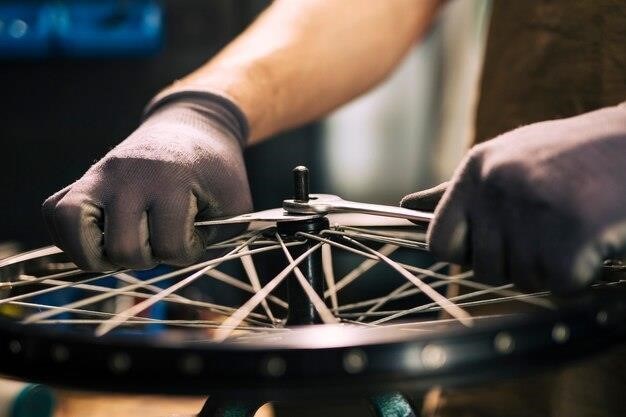Overview of the Ryobi 1800 PSI Pressure Washer
The RYOBI 1800 PSI Electric Pressure Washer is a lightweight, portable solution for outdoor cleaning tasks. It features a compact design, 3-year warranty, and easy operation, ideal for residential use.
Key Features
The RYOBI 1800 PSI Pressure Washer offers a compact, lightweight design, portability, and a powerful 13 Amp electric motor. It delivers 1800 PSI and 1.2 GPM for efficient cleaning.
2.1 Compact Design
The RYOBI 1800 PSI Pressure Washer features a compact and lightweight design, making it easy to store in small spaces and transport around your property. Its streamlined construction allows for convenient maneuverability, ensuring you can tackle outdoor cleaning tasks without bulky equipment. The unit is designed to be space-efficient, perfect for homeowners with limited storage capacity. This compact design enhances portability while maintaining powerful performance, making it an ideal choice for residential use.
2.2 Portability
The RYOBI 1800 PSI Pressure Washer is designed with portability in mind, featuring a lightweight and compact frame that makes it easy to maneuver around your property. Equipped with a durable handle and wheels, this unit allows for effortless transportation to various cleaning locations. Its compact size ensures it can be easily stored in garages, sheds, or other small spaces. The portability of this pressure washer makes it ideal for homeowners who need to clean multiple areas without the hassle of bulky equipment.
2.3 Power and Efficiency
The RYOBI 1800 PSI Pressure Washer delivers reliable power and efficiency, making it suitable for light to medium-duty cleaning tasks. Its 13 Amp electric motor produces 1800 PSI and 1.2 GPM, providing enough force to tackle dirt and grime on surfaces like cars, grills, and windows. The unit is energy-efficient and designed to minimize waste, ensuring optimal performance while maintaining eco-friendly operation. This balance of power and efficiency makes it a practical choice for homeowners seeking a versatile cleaning solution for outdoor applications.
Product Specifications
The RYOBI 1800 PSI 1.2 GPM Electric Pressure Washer features a 13 Amp motor, lightweight design, and 3-year warranty, ideal for light-duty residential cleaning tasks.
3.1 Technical Specifications
The RYOBI 1800 PSI 1.2 GPM Electric Pressure Washer features a powerful 13 Amp electric motor, delivering 1.2 gallons per minute of water flow. It weighs approximately 32 pounds, ensuring portability and ease of use. The unit operates at 1800 PSI, suitable for light-duty residential cleaning tasks. The pressure washer includes a 35-foot power cord with GFCI protection for outdoor safety. Designed for efficiency, it offers reliable performance for cleaning cars, windows, grills, and other outdoor surfaces, making it a versatile tool for home maintenance.
3.2 Performance Metrics
The RYOBI 1800 PSI 1.2 GPM Electric Pressure Washer delivers consistent performance for light-duty residential cleaning. With a flow rate of 1.2 gallons per minute, it efficiently tackles tasks like washing cars, windows, and outdoor furniture. The 1800 PSI output ensures effective cleaning of grills, recreational vehicles, and small driveways. Its lightweight design enhances maneuverability, while the 35-foot power cord provides extended reach. This pressure washer is designed for reliability and ease of use, making it a versatile tool for maintaining outdoor spaces with minimal effort and maximum efficiency.
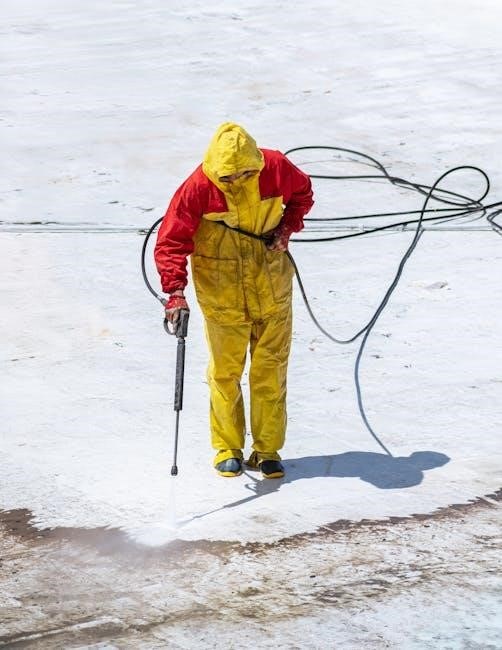
Warranty Information
The RYOBI 1800 PSI Electric Pressure Washer is backed by a 3-year limited warranty, providing coverage for defects in materials and workmanship. This warranty ensures peace of mind for users, offering repair or replacement options for faulty components. For warranty claims, customers can contact RYOBI customer support at 1-800-860-4050. Proper registration and adherence to the user manual are recommended to maintain warranty validity. This comprehensive coverage underscores RYOBI’s commitment to quality and customer satisfaction.
Safety Guidelines
Always read the operator’s manual before use. Ensure proper control of the pressure washer. Intended for outdoor use only to avoid accidents.
5.1 Safety Precautions
Always read the operator’s manual before use. Wear protective eyewear and closed-toe shoes. Avoid using the pressure washer on slippery surfaces or at heights. Keep children and pets away. Never modify the equipment or use it near open flames. Ensure the area is clear of debris. Use the correct nozzle for the task to avoid damage or injury. Do not aim the spray at people, animals, or sensitive surfaces. Follow all warnings and guidelines provided in the manual for safe operation. Regularly inspect the equipment for damage before use.
5.2 Assembly Instructions
Begin by unpacking and inspecting all components for damage. Attach the handle to the main unit by aligning the screws and tightening securely. Install the spray gun by connecting it to the hose using the quick-connect coupler. Ensure the hose is properly secured to the pressure washer. Follow the manual for correct nozzle installation. Connect the power cord and ensure all connections are tight. Double-check all parts for proper assembly before first use. Refer to the manual for detailed diagrams and steps to ensure everything is assembled correctly and safely.
5.3 Operational Safety
Always wear safety goggles and closed-toe shoes when operating the pressure washer. Ensure the area is clear of obstacles and children. Avoid using the pressure washer in wet conditions or near open flames. Never point the spray gun at people or animals. Use the correct nozzle for the task to avoid excessive pressure. Keep the unit on a stable, flat surface during operation. Do not modify or tamper with the pressure washer. Follow all guidelines in the manual to ensure safe and effective use. Regularly inspect hoses and connections for damage before operation.
5.4 Emergency Procedures
In case of an emergency, immediately turn off the pressure washer and unplug it from the power source. Wear protective eyewear and ensure the area is safe. If the machine overheats, stop use and let it cool. For electrical issues, disconnect the power cord and contact customer support. If a hose or connection leaks, shut off the unit and inspect for damage. In case of loss of pressure, check for kinks in hoses or blockages. Always follow the manual’s guidelines for safe resolution of emergencies. Regular inspections can help prevent unexpected issues.
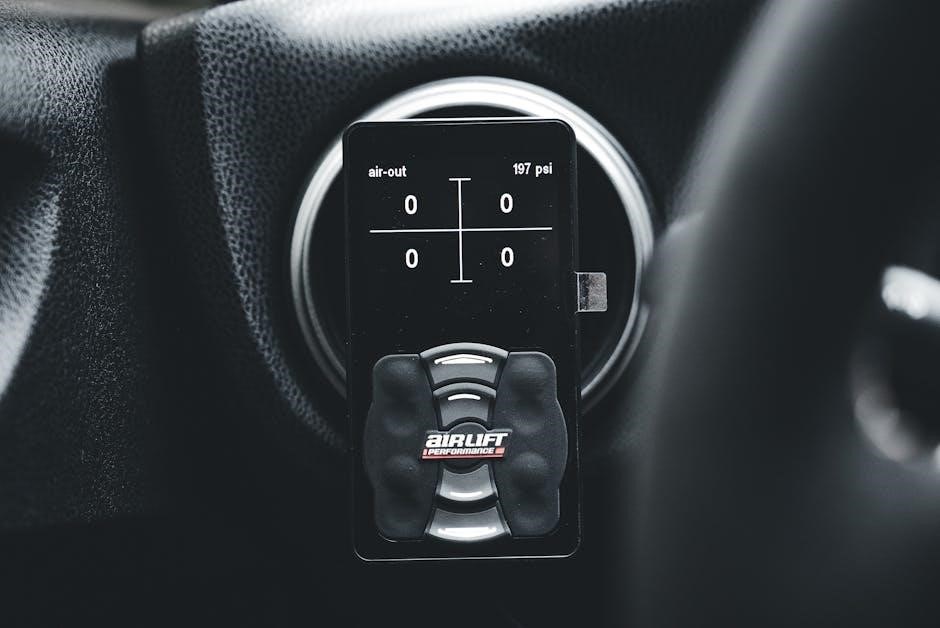
Initial Setup and Installation
Prepare for first use by inspecting all components and ensuring proper assembly. Connect the pressure washer to a power supply, press the reset button, and attach accessories as needed.
6.1 Preparing for First Use
To ensure safe and effective operation, begin by inspecting the pressure washer for any damage or missing parts. Read the user manual thoroughly to understand the product’s features and safety guidelines. Before first use, connect the unit to a power supply and press the reset button on the plug to ensure it is operational. Attach all necessary accessories securely, and ensure the area to be cleaned is clear of obstacles. Finally, perform a quick test run to verify proper function.
6.2 Attaching Accessories
Attaching accessories to the RYOBI 1800 PSI Pressure Washer is straightforward. Begin by ensuring all parts are compatible with the unit. Follow the user manual for specific instructions on securing nozzles, brushes, or other attachments. Tighten all connections firmly to prevent leaks during operation. Always use genuine RYOBI accessories to maintain performance and safety. After attaching, test the connection by running the washer at a low setting to ensure everything is securely in place. Properly fitted accessories enhance cleaning efficiency and prevent potential damage to the unit.
6.3 Connecting to Power Supply
To connect the RYOBI 1800 PSI Pressure Washer to a power supply, ensure the outlet is grounded and suitable for the unit’s voltage requirements. Inspect the power cord for any damage before use. Plug the cord into the outlet and press the reset button on the plug if necessary. Avoid using extension cords unless absolutely required. Always refer to the user manual for specific electrical connection guidelines to ensure safe and proper operation of the pressure washer.
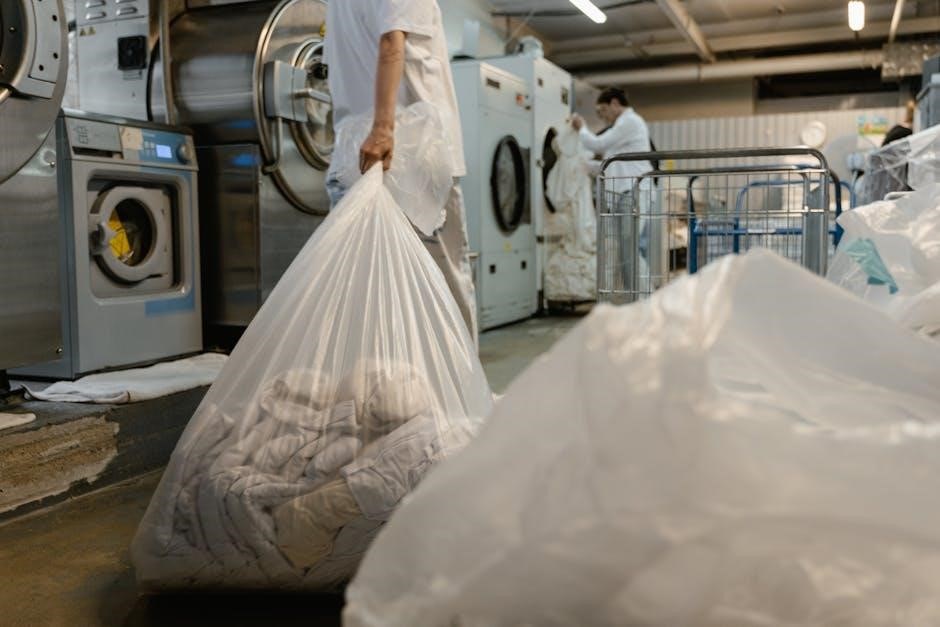
Maintenance and Troubleshooting
Regularly inspect the pressure washer for damage and clean the nozzle. Check power connections and avoid harsh chemicals. Refer to the manual for detailed troubleshooting steps.
7.1 Routine Maintenance
Regular maintenance ensures optimal performance. Inspect the pressure washer every 6 months for damaged parts. Clean the nozzle and filter after each use to prevent clogs. Check the power cord and connections for wear. Store the unit in a dry, protected area during winter. Use eco-friendly detergents to avoid internal damage. Replace worn seals or O-rings promptly. Always follow the manual’s guidelines for maintenance to extend the product’s lifespan and maintain efficiency.
7.2 Common Issues and Solutions
Common issues include low pressure, which may result from a clogged nozzle or faulty pump. Check and clean the nozzle regularly. If the pressure washer doesn’t turn on, ensure the power cord is intact and the outlet is functioning. Leaks around connections can be fixed by replacing worn seals. For reduced performance, inspect the filter and hose for blockages. Always refer to the user manual for detailed troubleshooting steps. Addressing these issues promptly ensures optimal performance and extends the product’s lifespan.
7.3 Winterization Tips
To prepare your RYOBI 1800 PSI Pressure Washer for winter, drain all water from the hose and pump to prevent freezing. Use a pump antifreeze solution if available. Store the unit in a dry, protected area away from direct sunlight and extreme temperatures. Disconnect the power cord and ensure all accessories are clean and dry. Before storing, check for any damage or wear and address it promptly. Proper winterization extends the lifespan and ensures the pressure washer is ready for use in the spring.
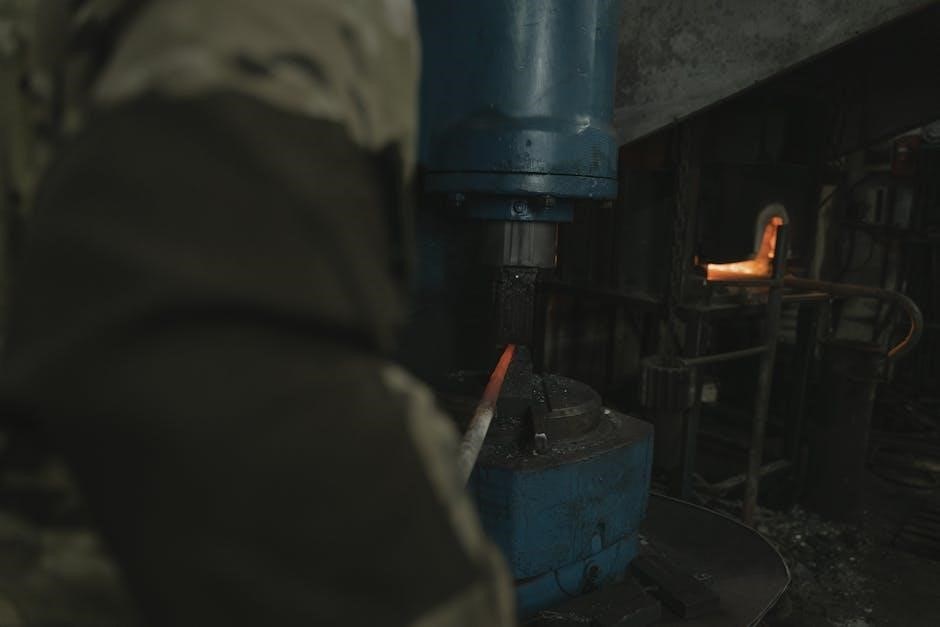
Accessories and Equipment
The RYOBI 1800 PSI Pressure Washer supports various accessories, including nozzles for different surfaces, extension hoses, and brushes. These enhance cleaning versatility and efficiency.
8.1 Types of Nozzles
The RYOBI 1800 PSI Pressure Washer comes with multiple nozzle options, including 25°, 40°, and soap nozzles, designed for various cleaning tasks. The 25° nozzle is ideal for tough stains, while the 40° nozzle is better for delicate surfaces. The soap nozzle allows for detergent application, enhancing cleaning power. Each nozzle is designed to optimize water pressure and flow, ensuring efficient cleaning for different surfaces. Regularly inspecting and replacing nozzles as needed is recommended to maintain performance. Always use the correct nozzle for the task to avoid damage and ensure safety.
8.2 Additional Accessories
The RYOBI 1800 PSI Pressure Washer supports various additional accessories to enhance cleaning efficiency. These include a 20-foot flexible hose for extended reach, a spray gun with an ergonomic design for comfort, and a built-in detergent tank for easy soap application. Optional brush attachments are available for scrubbing tough stains, while a pressure washer extension wand provides extra versatility. These accessories are designed to work seamlessly with the unit, ensuring optimal performance for diverse cleaning tasks. Always use genuine RYOBI parts to maintain warranty coverage and ensure compatibility.
8.3 Recommended Detergents
For optimal cleaning results, use detergents specifically designed for electric pressure washers. RYOBI recommends eco-friendly, biodegradable options to protect surfaces and the environment. Avoid abrasive or acidic detergents, as they may damage the unit or harm materials. Always follow the manufacturer’s guidelines for application rates. The built-in detergent tank on the RYOBI 1800 PSI model ensures easy soap application. For tough stains, a concentrated formula can be used, but rinse thoroughly afterward to prevent residue buildup. Using the right detergent enhances cleaning efficiency and prolongs the lifespan of your pressure washer.

Environmental Considerations
The RYOBI 1800 PSI Pressure Washer is designed with eco-friendly features, promoting energy efficiency and water conservation. Using biodegradable detergents helps protect the environment and ensures safe cleaning.
9.1 Water Conservation Tips
To minimize water usage, use the RYOBI 1800 PSI Pressure Washer with low-flow nozzles and adjust pressure settings based on the cleaning task. Clean in sections to avoid over-spraying, and turn off the water supply when not in use. Regularly inspect hoses and connections for leaks to prevent water waste. For delicate surfaces, use lower PSI settings to reduce water flow while still achieving effective cleaning. These practices help conserve water and extend the life of your pressure washer.
9.2 Eco-Friendly Detergents
Using eco-friendly detergents with the RYOBI 1800 PSI Pressure Washer helps reduce environmental impact while maintaining cleaning efficiency. Opt for biodegradable and phosphate-free cleaners to minimize harm to plants and waterways. Always follow the manufacturer’s dilution guidelines to avoid overuse. For tougher stains, select detergents specifically designed for pressure washers but ensure they are environmentally safe. Refer to the user manual for recommended detergent types to ensure compatibility and optimal performance while promoting sustainability.
9.3 Energy Efficiency
The RYOBI 1800 PSI Pressure Washer is designed with energy efficiency in mind, featuring a 13 Amp electric motor that optimizes power consumption. Its compact design ensures minimal energy waste while delivering consistent performance. The unit automatically shuts off when not in use, further reducing energy consumption. By using eco-friendly detergents and following the manual’s guidelines, users can enhance energy efficiency while maintaining cleaning effectiveness. This model is built to provide reliable performance while promoting sustainable energy use for outdoor cleaning tasks.
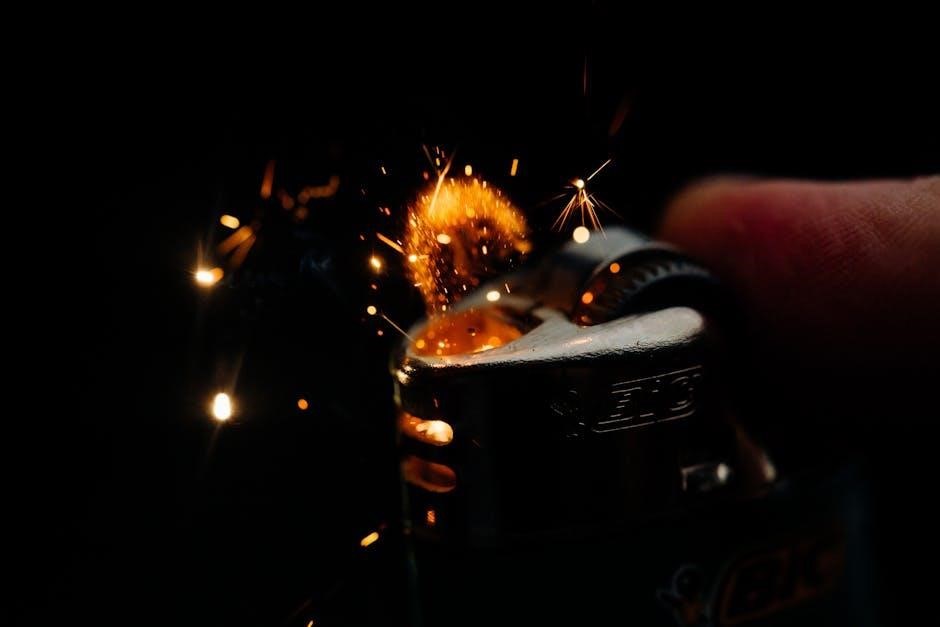
Warranty and Customer Support
The RYOBI 1800 PSI Pressure Washer is backed by a 3-year limited warranty. Customer support options include troubleshooting articles and assistance via phone at 1-800-860-4050.
10.1 What’s Covered
The 3-year limited warranty covers defects in materials and workmanship for the RYOBI 1800 PSI Pressure Washer. It applies to residential use and ensures repair or replacement of faulty parts. The warranty does not cover damage from misuse, neglect, or normal wear and tear. For warranty claims, contact RYOBI customer support directly. Always refer to the user manual for detailed warranty conditions and exclusions.
10.2 Customer Support Options
RYOBI offers dedicated customer support to assist with inquiries and issues related to the 1800 PSI Pressure Washer. Users can contact the support team via phone at 1-800-860-4050 or through email for troubleshooting and warranty-related questions. Additionally, the official RYOBI website provides access to user manuals, troubleshooting guides, and FAQs. Customers can also visit authorized service centers for hands-on support. Online resources include detailed maintenance tips and repair instructions to help users resolve common issues independently. These support options ensure a smooth and efficient experience for RYOBI pressure washer owners.
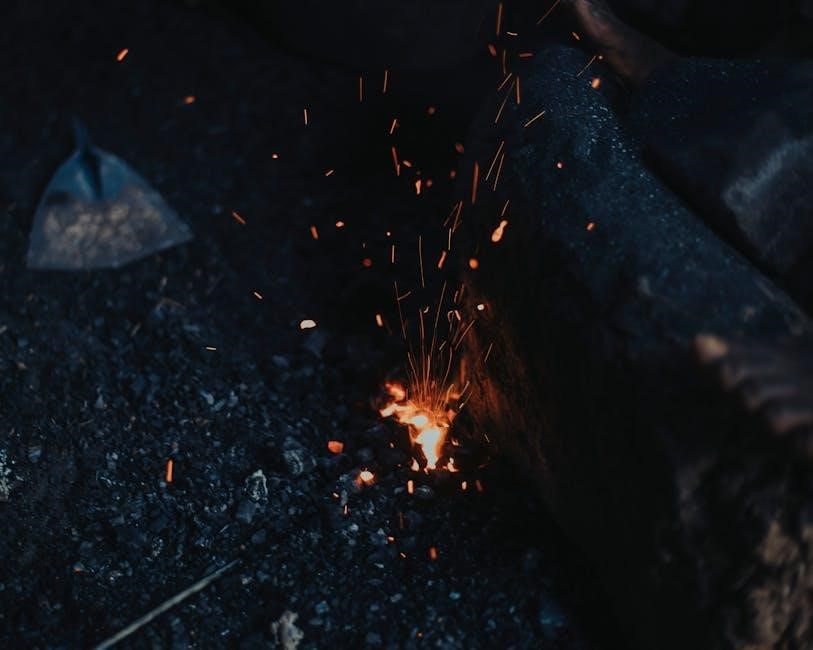
User Manual Overview
The user manual for the RYOBI 1800 PSI Pressure Washer is a comprehensive guide that covers essential information for optimal use and maintenance. It includes detailed product specifications, setup guidelines, and troubleshooting tips. The manual emphasizes safety precautions, assembly instructions, and operational best practices. Additionally, it provides maintenance schedules, such as inspecting the unit every 6 months and checking all connections. This resource ensures users can efficiently operate and maintain their pressure washer, addressing common issues and promoting longevity. The manual is available online for easy access and reference.
Troubleshooting Common Issues
Common issues with the RYOBI 1800 PSI Pressure Washer include low water pressure, no water output, or the motor not starting. Check for clogged nozzles, kinked hoses, or incorrect pressure settings. Ensure the water supply is turned on and the hose is properly connected. If the motor doesn’t start, verify the power cord is plugged in and the reset button hasn’t tripped. For persistent issues, refer to the troubleshooting section in the manual or contact customer support. Regular maintenance, like clearing debris and inspecting connections, helps prevent these problems.
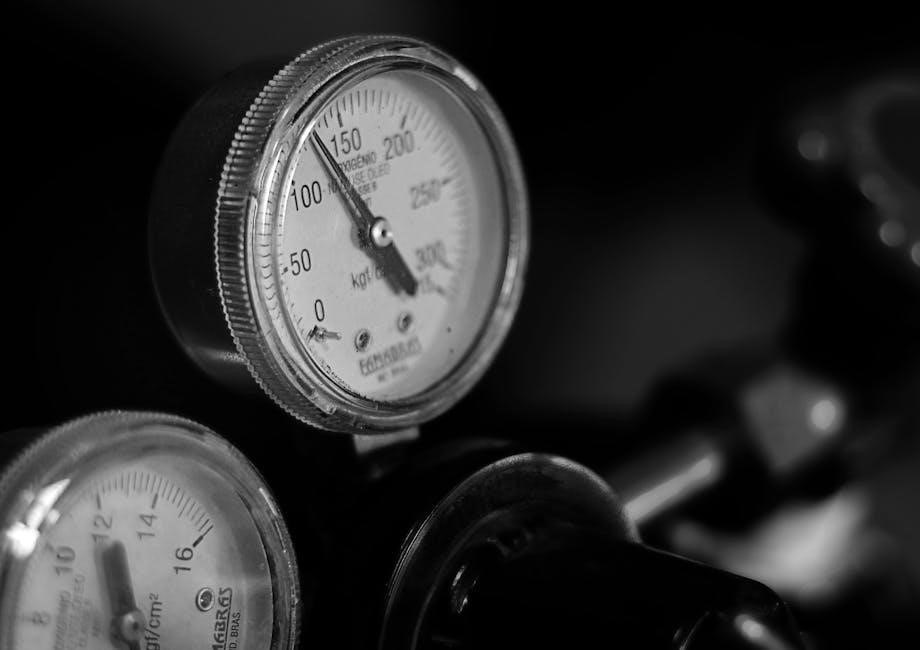
Storage and Transportation
Proper storage and transportation of the RYOBI 1800 PSI Pressure Washer are essential to maintain its performance and longevity. After use, clean the unit thoroughly, drain excess water, and store it in a dry, protected area to avoid damage from moisture or pests. When transporting, ensure the washer is securely placed to prevent movement or impact. Regularly inspect hoses and connections for damage before and after transportation. Always follow the manufacturer’s guidelines for storage and handling to ensure safety and optimal functionality.
Tips for Different Surfaces
The RYOBI 1800 PSI Pressure Washer is versatile for various surfaces. Use lower settings for delicate surfaces like windows and higher settings for tough stains on driveways and sidewalks.
14.1 Cleaning Delicate Surfaces
When cleaning delicate surfaces like windows, siding, or patio furniture, use a wide fan tip and reduce the pressure setting to avoid damage. For glass or vinyl surfaces, apply a mild detergent specifically designed for pressure washers. Avoid using high-pressure settings or harsh chemicals, as they can damage materials or leave streaks. Test a small area first to ensure the detergent and pressure setting are suitable. Regular cleaning with low-pressure settings helps maintain delicate surfaces without causing wear or tear.
14;2 Handling Tough Stains
For tough stains on driveways, sidewalks, or decks, use the narrow fan tip and increase the pressure setting to maximize cleaning power. Apply a high-quality detergent designed for pressure washers and let it sit for a few minutes to penetrate the stain. Avoid using the highest pressure setting on sensitive surfaces to prevent damage. Scrub stubborn stains with a stiff brush if necessary, then rinse thoroughly. Repeat if needed, but avoid excessive force to maintain surface integrity. Regular cleaning helps prevent stains from becoming deeply embedded.

User Experience and Feedback
Users praise the RYOBI 1800 PSI Pressure Washer for its lightweight and portable design, making it easy to maneuver. Many find it ideal for light-duty tasks like cleaning cars, grills, and windows. The compact structure and 3-year warranty add to its appeal. Some users highlight the ease of assembly and operation, while others appreciate the responsive customer support. Overall, it’s a reliable choice for residential use, offering good value for its performance and convenience.
The RYOBI 1800 PSI Pressure Washer is a versatile and efficient cleaning tool designed for light-duty residential use. Its lightweight, portable design and 3-year warranty make it a practical choice for homeowners. With easy assembly and operation, it’s ideal for tasks like cleaning cars, grills, and outdoor surfaces. The comprehensive manual ensures users can maximize its performance while maintaining safety. Overall, it’s a reliable and cost-effective solution for keeping your outdoor spaces clean and well-maintained.


